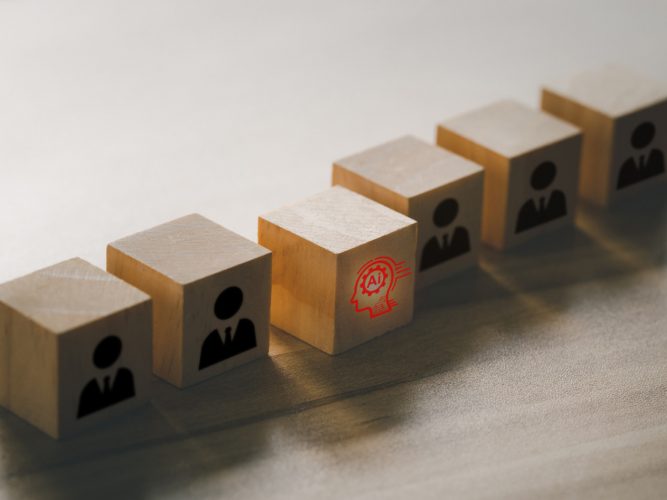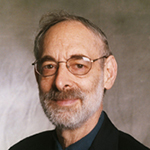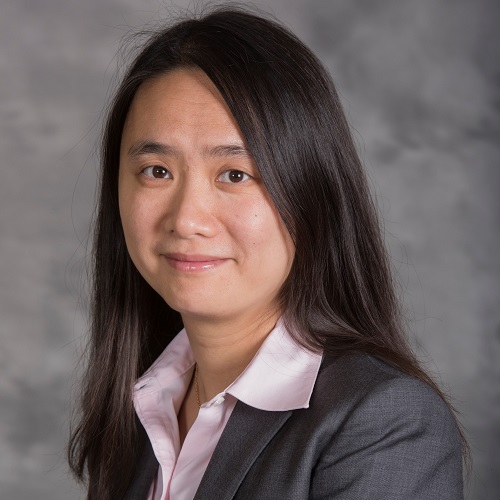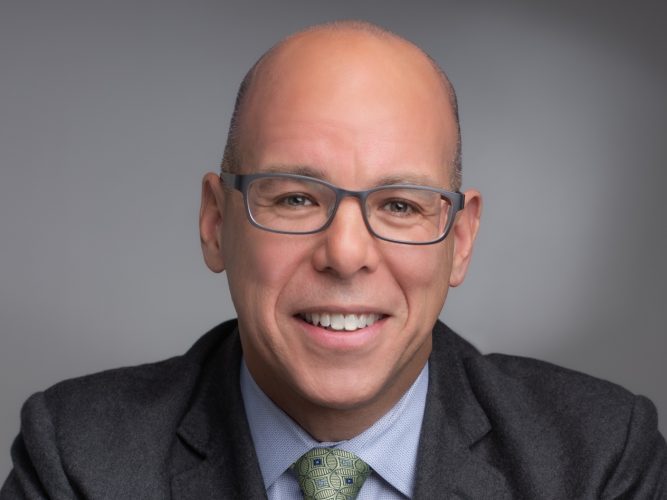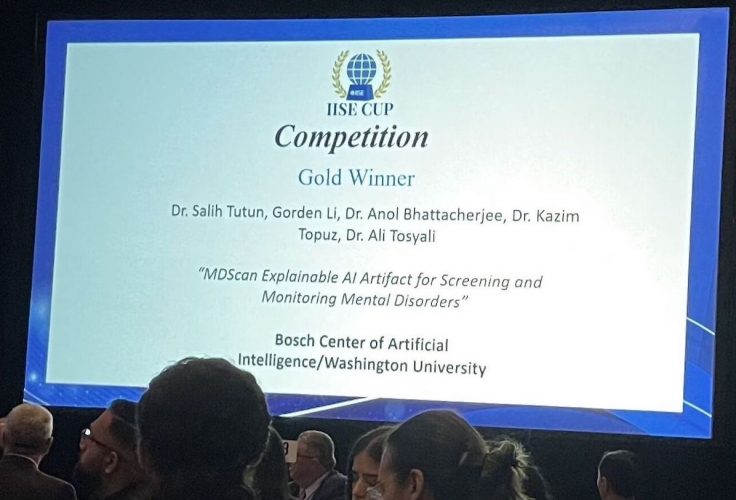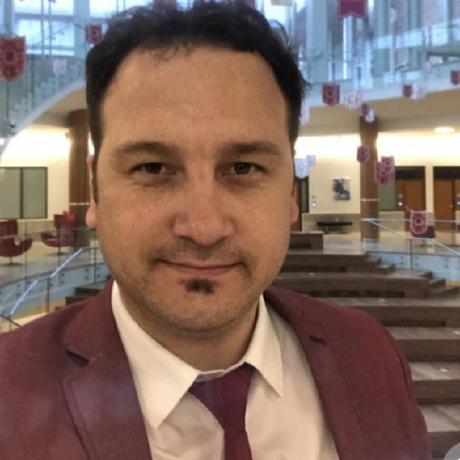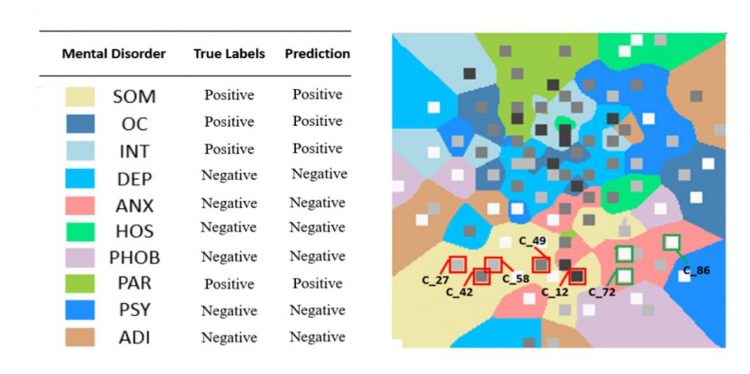Artificial intelligence tools such as ChatGPT and DALL-E are prompting uncertainty about the future employment landscape. Will they help workers by boosting productivity and enhancing the quality of their output? Or will the improved effectiveness of these tools replace workers instead?
As it turns out, the early economic effects of generative AI are already noticeable, if you know where to look.
Olin researchers Oren Reshef and Xiang Hui (along with a colleague from New York University, Luofeng Zhou) set out to quantify how AI tools have affected specific subsets of the labor market—writing-related and image-related freelance workers.
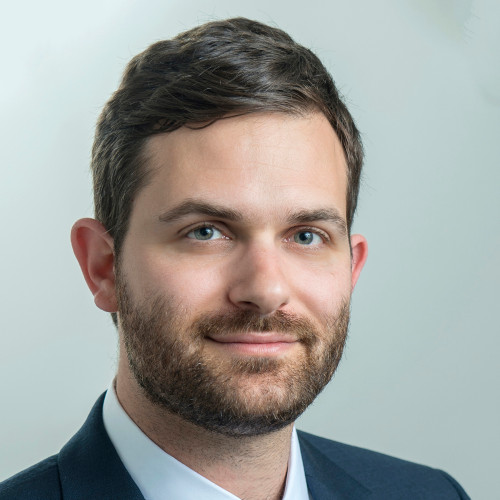
“There’s a lot of uncertainty trying to predict what the effects of AI will be in 10 years, but AI could be very different in 10 years,” said Reshef, an assistant professor of strategy. “We were thinking, ‘Let’s try to see empirically what the direct effect is in the very short run.’”
In both subsets of workers, the effect was evident: In the months after the release of popular AI tools, freelance workers in affected fields saw decreases in both the number of jobs and total earnings recorded on a widely used freelance platform.
The results of this research are the subject of a working paper co-authored by Hui, Reshef and Zhou, “The Short-Term Effects of Generative Artificial Intelligence on Employment: Evidence from an Online Labor Market,” which is currently under review for publication.
‘A more immediate effect’
Reshef and Hui said the team chose freelancers to see the rapid effects of AI releases. Because freelance work is naturally short-term and flexible, employers could pivot that work more quickly to AI than they could with full-time employees.
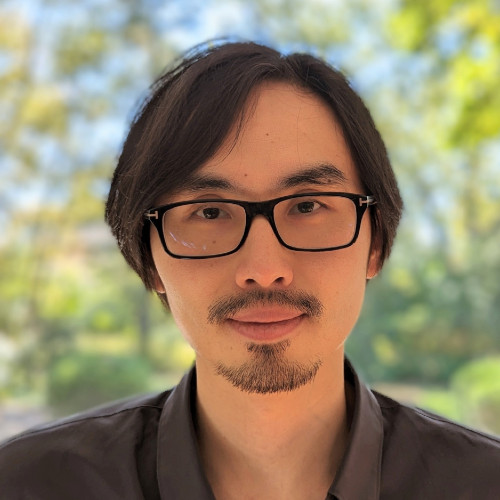
“There is little friction in this marketplace,” Hui said. “So, when you have technological advance, you would expect to see a more immediate effect.”
The researchers studied this market by collecting data from Upwork, an online freelance marketplace for knowledge workers. They could view workers’ employment histories, skills and qualifications, past earnings and reviews.
They started with workers in writing and related fields (proofreading and copy editing), because research has shown that they are among the most vulnerable to disruption by AI. Specifically, they looked at what happened to their jobs and income on Upwork shortly after the November 2022 release of ChatGPT, a powerful language-processing chatbot that creates higher-quality text than was previously available via AI.
After ChatGPT’s release, the number of monthly jobs for writing-related freelancers on Upwork declined by 2%, while monthly earnings declined by 5.2%.
“AI is really getting better, and this year we have ChatGPT, which is like a bomb going off, making everybody aware of it,” Hui said.
Hui, Reshef and Zhou’s analysis showed that after ChatGPT’s release, the number of monthly jobs for writing-related freelancers on Upwork declined by 2%, while monthly earnings declined by 5.2%.
A similar impact hit image-related workers (designers, image editors and artists) after the releases of two image-based AI tools, DALL-E, in April 2022, and Midjourney, in July 2022. Workers in those fields saw even steeper declines—a 3.7% drop in monthly jobs and a 9.4% loss of income.
While the team expected this outcome, they said it was important to be able to show it empirically.
“This is concrete evidence based on real economic data, instead of intuition or hunches,” Hui said.
Documenting the AI transition
Reshef and Hui were struck by the fact that these negative effects didn’t diminish for freelancers who were identified as more experienced and skilled.
“One hypothesis is that the highest-quality people, those with the most experience, would be the ones most protected from this technology—that their skills would act as a moderating factor,” Reshef said.
Instead, the evidence suggested that more highly skilled workers—as defined by such attributes as the number and skill level of past jobs, hourly rate, and Upwork’s “top-rated” badges—actually saw a greater drop in new jobs and income.
While it seems counterintuitive, he said this outcome is consistent with other research on the effects of AI in the workforce.
“In a [separate] experiment, researchers introduce the technology to various workers,” he said. “They find that it helps the lower-quality workers the most, and, if you think about it, it makes sense. If you’re doing lower-quality work, this new tool can help increase your productivity or quality. For higher-quality workers, instead of being protected, you’re losing your competitive edge.”
Reshef and Hui cautioned that the results regarding skill level are not definitive, but rather are suggestive of that outcome.
They also noted that all these results only reflect the short-term impact of AI tools on freelance workers. As AI technology evolves and becomes more integrated into other tools, these effects might be increased or reduced, or provide benefits to workers or consumers to mitigate them.
“We only look at the short-run effect on these workers,” Reshef said. “We’re showing one potential ‘danger’ of this technology, but there are numerous benefits as well that are beyond the scope of this research.
“People could get a new job working with AI to do something we haven’t even thought of yet.”


